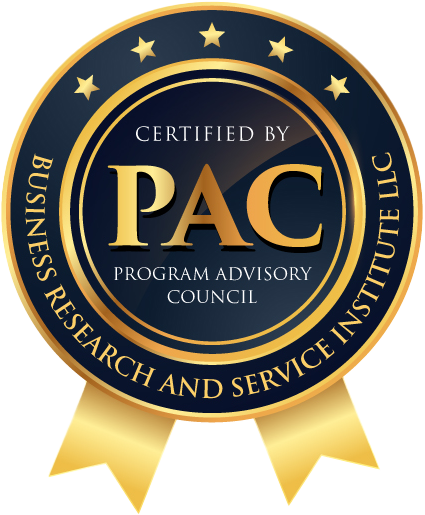Are you looking to enhance the efficiency of your warehouse operations?
Do you find yourself grappling with wasted space and disorganized layouts? If so, it’s time to uncover the secrets of warehouse optimization.
In this article, we will provide you with 13 actionable tips that can help optimize your warehouse and streamline your operations, ultimately saying goodbye to wasted space.
Let’s dive in and explore the world of warehouse optimization.
The Importance of Warehouse Optimization
Efficient warehouse operations are crucial for businesses to meet customer demands, reduce costs, and stay competitive in the market. Warehouse optimization involves analyzing and improving various aspects of your warehouse, such as layout, inventory management, and location. By implementing effective warehouse optimization strategies, you can maximize space utilization, minimize errors, and enhance overall productivity.
Let’s explore some powerful tips to optimize your warehouse effectively.
1. Analyzing and Optimizing Your Warehouse Layout
Start by conducting a thorough analysis of your warehouse layout. Assess the flow of goods, identify bottlenecks, and evaluate storage areas. Optimize your warehouse layout by considering factors such as product demand, accessibility, and proximity to shipping and receiving areas. Utilize intelligent warehouse layout optimization techniques to minimize travel time and maximize efficiency.
2. Efficient Warehouse Inventory Management
Warehouse inventory optimization plays a significant role in warehouse optimization. Implementing robust inventory management practices helps maintain optimal stock levels, avoid overstocking or stockouts, and reduce storage space requirements. Utilize advanced inventory management systems and techniques to accurately track inventory, forecast demand, and implement just-in-time inventory practices. This way, you can ensure that your warehouse space is utilized efficiently.
3. Strategic Warehouse Location Optimization
Choosing the right location for your warehouse is crucial for optimizing operations. Evaluate the proximity to suppliers, customers, and transportation hubs to minimize transportation costs and delivery times. Additionally, consider factors like local regulations, labor availability, and market accessibility when selecting a warehouse location. Optimal warehouse location optimization helps reduce logistics costs and enhances overall efficiency.
You should also read: What Is Lean Inventory Management & How Does it Work?
4. Harnessing the Power of Warehouse Management Systems (WMS)
Investing in a reliable Warehouse Management System (WMS) can revolutionize your warehouse operations. A WMS automates and streamlines key processes, such as inventory management, order fulfillment, and tracking. It provides real-time visibility into inventory levels, enhances order accuracy, and optimizes warehouse space requirements. Choose a WMS that aligns with your specific business needs to maximize efficiency and warehouse optimization.
5. Embracing Lean Principles for Warehouse Optimization
Lean principles are highly effective in warehouse optimization. Implement lean practices such as 5S methodology, value stream mapping, and continuous improvement to eliminate waste, reduce storage space requirements, and improve overall efficiency. Foster a culture of lean thinking among warehouse staff and empower them to contribute ideas for process improvement and space-saving warehouse storage solutions.
Related article: 5 Key Principles of Lean Inventory Management
6. Maximizing Warehouse Space Utilization
Efficient space utilization is paramount for warehouse optimization. Employ space-saving techniques such as vertical storage systems, mezzanine floors, and optimized racking systems to make the most of your warehouse’s vertical space. Categorize products based on demand and utilize space accordingly. Implement slotting analysis to identify the most suitable storage locations for each item, minimizing wasted space and maximizing efficiency.
7. Streamlining Order Fulfillment Processes
Order fulfillment processes have a significant impact on warehouse efficiency. Streamline your order picking, packing, and shipping processes to reduce errors and maximize productivity. Utilize strategies like batch picking, zone picking, or wave picking to minimize travel time and increase efficiency. Implement automation technologies like pick-to-light systems or voice-picking systems to improve accuracy and speed.
8. Improving Receiving and Put-Away Procedures
Well-organized receiving and put-away procedures are vital for warehouse optimization. Establish standardized receiving protocols to ensure accurate product identification and labeling. Implement efficient put-away strategies, such as location barcoding or RFID technology, to facilitate quick and error-free put-away. By streamlining these procedures, you can reduce errors and ensure efficient utilization of warehouse space.
9. Leveraging Automation for Warehouse Efficiency
Automation technologies can significantly enhance warehouse efficiency and space utilization. Consider implementing technologies such as conveyor systems, automated guided vehicles (AGVs), or robotic picking systems to streamline operations and reduce manual labor. These technologies improve order accuracy, increase picking speed, and optimize warehouse space requirements.
Related article: 3PL Warehousing: Discover it’s Benefits for Your Inventory
10. Enhancing Distribution Center Optimization
If you operate a distribution center, optimizing its efficiency is crucial for warehouse operations. Streamline processes between your warehouse and distribution center to minimize handoffs and reduce storage requirements. Implement cross-docking strategies and establish efficient collaborations with suppliers and transportation partners to facilitate smooth order flow and maximize warehouse space utilization.
11. Continuously Improving Warehouse Operations
Continuous improvement is key to sustaining warehouse optimization. Foster a culture of continuous improvement by encouraging open communication, gathering feedback, and implementing suggestions for process enhancements. Regularly review performance metrics, identify areas for improvement, and implement changes accordingly. Embrace methodologies like Six Sigma or Kaizen to drive continuous improvement initiatives and optimize your warehouse operations.
12. Embracing Sustainable Practices for Warehouse Optimization
Incorporating sustainable practices in your warehouse operations not only benefits the environment but also improves efficiency and reduces costs. Implement energy-efficient lighting solutions, establish recycling programs for packaging materials, and explore eco-friendly packaging alternatives. Look for opportunities to reduce waste and minimize your warehouse’s carbon footprint. Embracing sustainable practices aligns with warehouse optimization goals and supports a greener future.
13. Training and Empowering Warehouse Staff
Investing in training and empowering your warehouse staff is crucial for optimizing operations. Provide comprehensive training programs to enhance their skills and knowledge in areas such as inventory management, order fulfillment, and operating warehouse equipment. Encourage cross-training to ensure flexibility and backup capabilities within your workforce. Empower employees to contribute ideas and suggestions for process improvement, creating a culture of ownership and continuous learning.
You should also read: Supply Chain Jobs & Careers: The Ultimate List
Conclusion
Warehouse optimization is essential for businesses to thrive in today’s competitive market. By implementing these 13 powerful tips, including warehouse layout optimization, efficient inventory management, strategic location optimization, and embracing sustainable practices, you can say goodbye to wasted space and enhance overall efficiency. Remember to leverage warehouse management systems, automation technologies, and continuous improvement practices to further optimize your operations. Embrace a culture of optimization and efficiency to ensure your warehouse becomes a well-oiled machine.
FAQs (Frequently Asked Questions)
How does warehouse optimization contribute to cost reduction?
Warehouse optimization reduces costs by maximizing space utilization, minimizing inventory holding costs, and improving overall operational efficiency.
What is the role of a Warehouse Management System (WMS) in warehouse optimization?
A Warehouse Management System (WMS) automates and streamlines key warehouse processes, enhancing inventory accuracy, order fulfillment speed, and space utilization.
Can warehouse optimization help improve order accuracy?
Yes, by implementing efficient processes and utilizing automation technologies, warehouse optimization can significantly improve order accuracy and minimize errors.
How can I incorporate sustainable practices in warehouse operations without compromising efficiency?
You can incorporate sustainable practices by implementing energy-efficient solutions, recycling programs, and exploring eco-friendly packaging alternatives that align with warehouse optimization goals.
What steps can I take to continuously improve warehouse operations?
Continuously improve warehouse operations by fostering a culture of continuous improvement, gathering feedback from employees, regularly reviewing performance metrics, and implementing suggested enhancements.

Aftab Khan is a logistics specialist with over forty years of experience in all aspects of supply chain and logistics management. He is an engineer by training and holds an MBA, besides several certifications from APICS/ASCM, ISCEA, and BRASI. Mr. Khan is the Executive Director of Business Research and Service Institute LLC, USA.









One Response
This is a great guide! All the tips will help us to maximize our space in our warehouse.